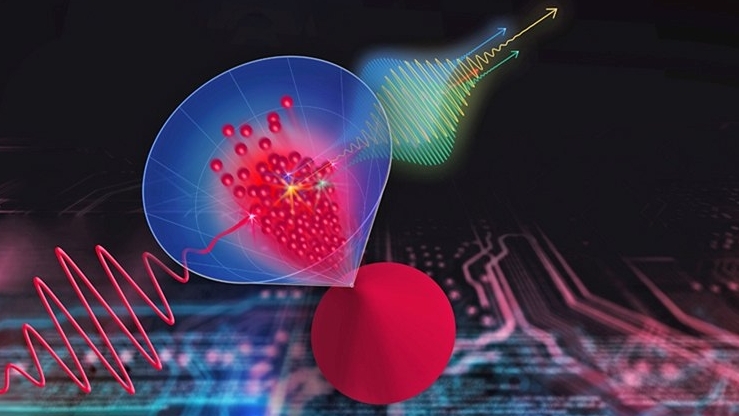Higher frequencies equal faster data transfer and more powerful processors. This formula has characterized the IT industry for years. Technically, however, it is anything but easy to keep increasing clock rates and radio frequencies. New materials could solve these problems. Experiments at the Helmholtz-Zentrum Dresden-Rossendorf (HZDR) have now delivered a promising result: An international team of researchers was able to get a new type of material (cadmium arsenide) to increase the frequency of a terahertz radiation flash by a factor of seven: A first step towards potential applications in future information technology.
When smartphones receive data and computer chips perform calculations, this is always associated with alternating electrical fields that send electrons on clearly defined journeys. The higher the frequencies of these fields, the faster the electrons can do their work and the higher the data transfer rates and processor speeds are possible. The terahertz range currently forms a kind of sound barrier here, which is why researchers all over the world want to understand how terahertz fields interact with new types of materials. With the TELBE terahertz facility, the HZDR has an outstanding source with which these interactions can be studied in detail and promising materials identified. One possible candidate could be cadmium arsenide, for example.
This compound was investigated together with researchers from Dresden, Cologne and Shanghai. Cadmium arsenide (Cd3As2) belongs to the group of so-called three-dimensional Dirac materials. In these, the electrons can interact very quickly and efficiently both with each other and with rapidly oscillating alternating electric fields.
To prove their suitability, the experts used a special process to produce wafer-thin, high-purity platelets of cadmium arsenide. They bombarded these material samples with strong terahertz pulses from the TELBE system. Detectors behind the back of the platelets recorded how the cadmium arsenide reacted to the radiation pulses. It was shown that it acts as a very efficient frequency multiplier and does not lose this efficiency, especially with the very strong terahertz pulses that can be generated at TELBE. The phenomenon of terahertz frequency multiplication up to the seventh harmonic has been demonstrated for the first time in this still young class of materials. The phenomenon promises numerous applications, but first the fundamentals need to be explored further.
Helmholtz-Zentrum Dresden-Rossendorf (HZDR), Simon Schmitt,


